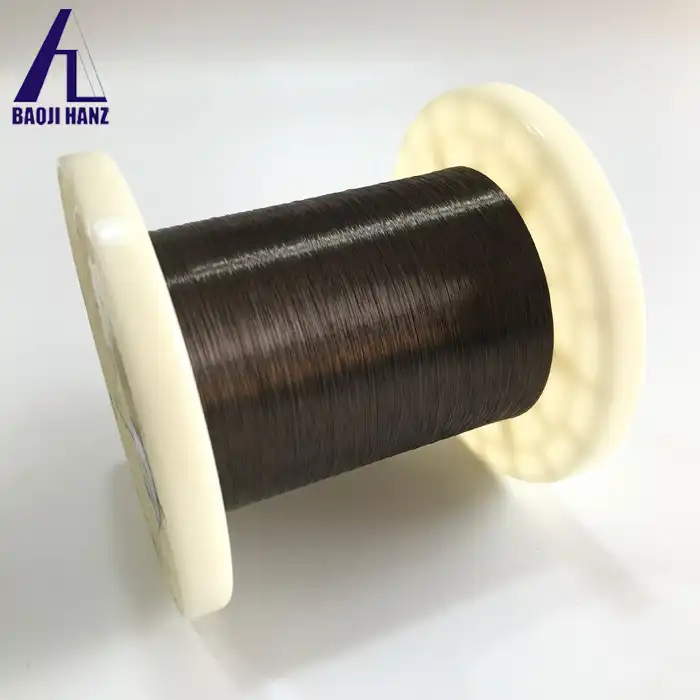Who uses nitinol guide wires?
2024-08-24 20:23:36
Nitinol guide wires have revolutionized various fields with their unique properties and versatility. But who exactly benefits from these remarkable tools? In this comprehensive guide, we'll explore the main users of Nitinol guide wires and delve into the specifics of their applications. Our exploration will include a detailed look at:
- How Do Medical Professionals Utilize Nitinol Guide Wires in Procedures?
- What Role Do Nitinol Guide Wires Play in Minimally Invasive Surgery?
- How Are Nitinol Guide Wires Beneficial in the Field of Interventional Radiology?
How Do Medical Professionals Utilize Nitinol Guide Wires in Procedures?
Nitinol guide wires are indispensable tools in modern medical procedures. Their use spans across various types of surgeries and diagnostics. Medical professionals rely on Nitinol guide wires for their exceptional flexibility, strength, and shape memory properties. These wires are primarily used in the following ways:
-
Cardiovascular Procedures: In cardiology, Nitinol guide wires assist in navigating and placing devices such as stents and balloons in the vascular system. Their superelasticity ensures they can withstand the rigorous demands of navigating tortuous blood vessels without kinking or breaking.
-
Endoscopy: During endoscopic procedures, Nitinol guide wires provide the necessary support and guidance to insert endoscopes and other instruments. Their flexibility and kink resistance make them ideal for maneuvering through complex anatomical structures.
-
Interventional Procedures: For various interventional procedures, such as catheterization and biopsy, Nitinol guide wires offer precise control and reliability. Their ability to return to their original shape after deformation ensures consistent performance even in challenging environments.
These applications underscore the importance of Nitinol guide wires in modern medicine, highlighting their role in enhancing the efficacy and safety of medical procedures.
What Role Do Nitinol Guide Wires Play in Minimally Invasive Surgery?
Minimally invasive surgery (MIS) represents a significant advancement in surgical techniques, emphasizing reduced trauma and faster recovery. Nitinol guide wires are at the heart of this transformation. Their role in MIS is characterized by several key benefits:
-
Enhanced Navigation: Nitinol guide wires offer superior flexibility and maneuverability, allowing surgeons to navigate through narrow and complex pathways with precision. This capability is crucial for performing surgeries with minimal incisions.
-
Reduced Trauma: The flexibility and strength of Nitinol guide wires help reduce the need for larger incisions, thereby minimizing tissue damage and promoting quicker healing. This reduction in trauma is a significant advantage of MIS over traditional surgical methods.
-
Improved Accuracy: With their shape memory and superelastic properties, Nitinol guide wires provide a stable and accurate pathway for other surgical instruments. This precision is essential for achieving optimal outcomes in minimally invasive procedures.
Overall, Nitinol guide wires are instrumental in advancing the field of minimally invasive surgery by providing enhanced precision, reduced trauma, and improved patient outcomes.
How Are Nitinol Guide Wires Beneficial in the Field of Interventional Radiology?
Interventional radiology (IR) relies heavily on advanced tools to perform complex procedures using imaging guidance. Nitinol guide wires are particularly valuable in this field due to their unique characteristics:
-
Precision and Control: In IR, precise navigation is crucial for accurate placement of catheters and other devices. Nitinol guide wires offer exceptional control and flexibility, enabling radiologists to maneuver through intricate vascular and anatomical pathways with ease.
-
Durability and Strength: The superelastic nature of Nitinol guide wires allows them to maintain their structural integrity under stress. This durability is essential for handling various interventional tasks, including the delivery of contrast agents and the deployment of stents.
-
Minimized Complications: By providing a reliable means of navigating and positioning devices, Nitinol guide wires help reduce the risk of complications during interventional procedures. Their ability to adapt to changes in shape and direction enhances the safety and effectiveness of IR procedures.
In summary, Nitinol guide wires are a cornerstone in interventional radiology, offering precision, strength, and flexibility that are critical for successful outcomes in complex procedures.
About Baoji Hanz Metal Material Co., Ltd.
Baoji Hanz Metal Material Co., Ltd., established on November 15, 2017, is located in the Baoji Titanium Valley Nonferrous Metals Base in China. The company specializes in the production and processing of Nitinol shape memory alloys, superelastic Nitinol alloys, and nickel-titanium alloys. Their services extend to industrial furnace design, mechanical equipment manufacturing, and advanced material processing.
The company prides itself on its sophisticated production equipment, excellent technology, and a professional sales and after-sales team. Baoji Hanz Metal Material Co., Ltd. is committed to scientific research, material purification, and the development of new materials. They are dedicated to converting research results into practical applications and expanding new markets.
Their business philosophy, “leading technology, excellent quality, stable development, win-win cooperation,” reflects their commitment to innovation and customer satisfaction. Baoji Hanz Metal Material Co., Ltd. is eager to collaborate with industry peers to seize business opportunities and create a brighter future.
For more information or to inquire about their products and services, please contact them at baojihanz-niti@hanztech.cn.
References
- Nitinol: Properties, Applications, and Innovations
- The Role of Nitinol in Minimally Invasive Surgery
- Interventional Radiology and Nitinol Guide Wires
- Advancements in Nitinol Technology
- Nitinol Guide Wires in Cardiovascular Procedures
